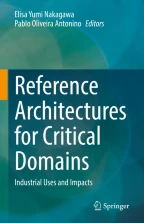
The evolution of communications systems has improved with the aggregation of mobility concepts, high data rates enabled by advances in radiofrequency technology, and new services enabled by enhanced computational power on end-user devices. In recent decades, wireless communication utilization has reached low-latency systems such as self-driving cars, remote surgery, online gaming, entertainment, massive machine communication such as sensor networks and the Internet of Things (IoT), and other applications requiring mobility and high performance. Moreover, the telecommunications industry faces significant business and technology challenges due to increased demands for new services, incorporation of new paradigms, and the technical challenges associated with implementing market demands and complying with regulatory standards. In this regard, reference architectures have been proposed for the development of such systems as a common approach for generalizing knowledge and standardizing integration, deployment, and operation between the leading players and associated stakeholders. This chapter presents examples of these architectures focusing on 5G, digital TV, and future scenarios.
This is a preview of subscription content, log in via an institution to check access.
eBook EUR 93.08 Price includes VAT (France)
Softcover Book EUR 84.39 Price includes VAT (France)
Hardcover Book EUR 116.04 Price includes VAT (France)
Tax calculation will be finalised at checkout
Purchases are for personal use only